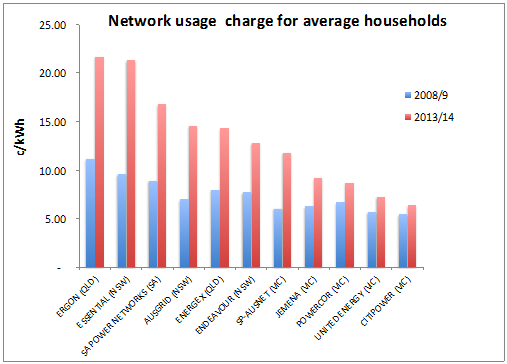Why power networks keep winning - at your expense
The Australian Energy Regulator decided yesterday that South Australian electricity users should pay $35 million more for electricity because SA PowerNetworks (the South Australian electricity distribution network service provider) needs to spend more money to prune trees.
On the face of it, this looks like an innocuous decision, and the $35 million will hardly make a noticeable difference to electricity bills. But on closer inspection, we can learn much from this about what is so wrong with the economic regulation of poles and wires in Australia.
SA PowerNetworks asked the Australian Electricity Regulator to approve a pass-through of $40 million so that it could fund more tree pruning. It asked for this because it said the AER allowed them too little money to prune trees when, in 2009, it set SAPN’s regulated revenues for the period 1 July 2010 to 30 June 2015.
The AER agreed with the SAPN’s pass-through application. It noted that when it had determined SAPN’s vegetation management allowance for the five years from 2010 it had used their actual spend in 2008-9. But since then there has been a little more rain in South Australia and so the trees have been growing a little more quickly than expected, and so more pruning needs to be done. So the AER agreed with SAPN that energy users should pay more to fund this. The AER did however prune (if you will excuse the pun) SAPN’s application by $5 million.
A reasonable person will hardly find much fault with any of this to this point. So where is the problem? Let's think a bit. Is there any reason that the AER might have allowed SAPN to charge users more than they needed? Has, say, demand growth been less than the AER expected? Well yes, it has actually. In fact when the AER set SAPN control in 2009, it agreed with them that peak demand would grow by 2.4 per cent per year from 2010-2015. In fact it has not grown at all. Peak demand in 2012 was about the same as what it was in 2007, and more than 10 per cent below what it was in 2009 when the AER set the price control.
Peak demand growth matters for expenditure. In fact around half of the circa $1.5 billion capital expenditure that the AER allowed SA PowerNetworks to recover from users, was to meet growing demand. Lower demand-growth translates into lower growth-related capital expenditure. But have we seen SA PowerNetwork’s application to charge users less because demand has not grown? Of course not. Can SA PowerNetwork’s users apply to the regulator for lower charges because demand is lower? Of course not.
So we have a system of regulation that encourages the network service providers to over-egg their expenditure proposals, and should it ever be demonstrated that the regulator has given them too little in some part of their budget, they get to come back during the regulatory period and apply, successfully, for more. From the network service provider’s point of view it's a case of heads I win, tails you lose.
So what to do? The AER will say that it is obliged to assess the pass-through applications on its merits, and it cannot offset lower spend on, say, demand-driven expenditure with higher spend on tree-pruning.
The Australian Energy Markets Commission will say that if you want to do anything about it, you need to propose changes to the rules, and that changes need to be justified because regulatory certainty is important.
State government Energy Ministers will say that they are concerned but ultimately they are not accountable, it's the Standing Council of Energy Ministers that sets policy.
And the standing council, if pushed, will ask for advice from the AEMC on what to do, precipitating a round of contemplation, consultation and so on. Something may change at some point in the future, but don’t bank on it.
Meanwhile the outcome of this is clear. The chart below shows that outside of Victoria, network charges for the average household have roughly doubled since 2008/9.

Source: Published network tariffs, AER data on average household electricity use, CME analysis
Our work on tariffs for some larger energy users suggests the outcomes for them are no better. All of this, from a system of regulation intended to deliver almost exactly the opposite. As they say, “go figure”.
Bruce Mountain, Director, CME (Carbon Energy Markets).
















